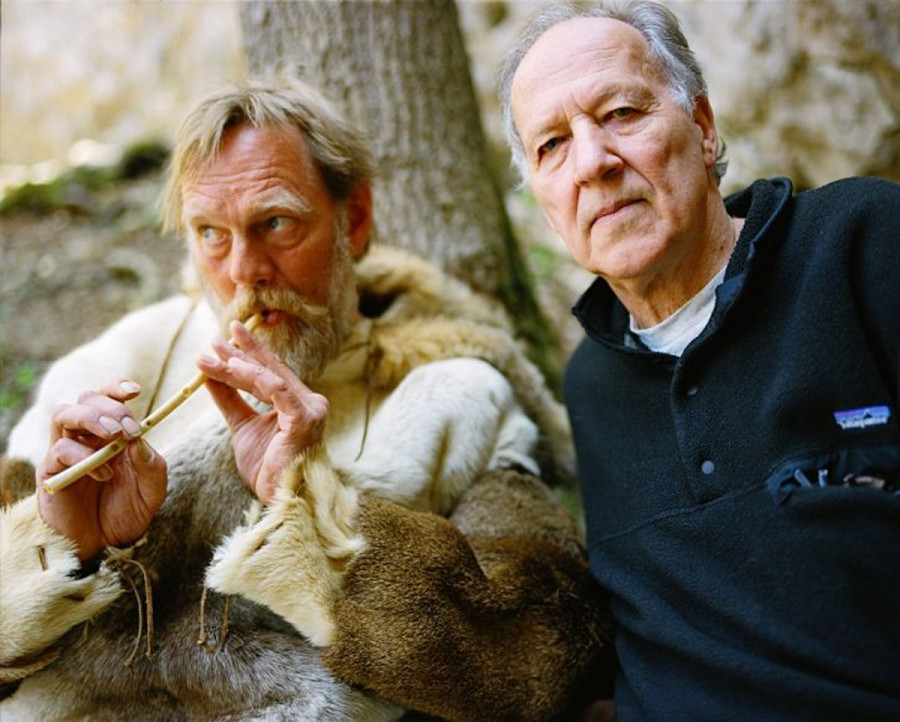Frame to Frame
The Bizarre and the Beautiful
Hate him or love him, we’re pretty blessed to have someone like Werner Herzog running across the globe and pointing his camera at the bizarre wonders of our world.
As of late he’s been spending most of his time on documentaries, but the audacious German auteur is best known for his feature films from the ’70s and early ’80s. Ever heard the story of the mad director who made a film where an actual ship was dragged across a mountain? The guy who (for another film, thankfully) had all his actors hypnotized? That’s Herzog. Though his collaborations with equally-looney Klaus Kinsky remains his best work to date, his recent documentaries have been reaching grandiose heights.
After spending time with the Grizzly Man and encountering wonders at the end of the world in Antartica, Herzog now brings us a subdued look on prehistoric cave painting with Cave of Forgotten Dreams. With a handful of crewmembers, he was given special access to the Chauvet Cave in the south of France, which was discovered by Jean-Marrie Chauvet in 1994 and now preserves one of the first examples of Upper Paleolithic life in the form of the oldest caveman paintings known to exist.
What sets this doc apart from his others is that it’s his first to toy with film’s mode du jour, 3D. There are many interesting things to take away from this, starting with the awe-inspiring paintings themselves. The people in charge of preserving these relics really deserve some kind of award for their efforts because not only is this stuff so beautifully drawn, for the fact that theses prehistoric paintings look astoundingly new.
http://killerbabytomatoes.files.wordpress.com/2011/07/cave-of-forgotten-dreams.jpg
Watching this in 3D does give you a sense of “being there” but overall, it brings little to the table. A small concern however, since the drawings take centre stage and they are a genuine wonder. Herzog’s austere narration is full of praise as it takes us through this journey, but the people who are interviewed tend to provide the film’s most candid and pleasant moments. They take us through the foundation of the cave itself to the measures they take today to preserve it. If the doc concentrated on them a bit more it would have greatly benefited, as the discarnate long shots of the drawings and choral score accompanying them may have you checking the time towards the end of the film.
Naturally, it wouldn’t be a Herzog documentary without a bit of madness thrown in the mix. The end is sure to spark the most talk at the water cooler, where a pack of albino alligators get connected in fantastic fashion to the artistic Neanderthals. I’ll say no more because it’s something that deserves to be seen and leave you with a wonderful Herzog quote, taken from his recent interview with Stephen Colbert: “I want the audience with me in wild fantasy in something that illuminates them. You see if I were only fact based, the book of books in literature then would be the Manhattan phone directory—four million entries, everything correct. But it [flies] out of my ears and I do not know: do they dream at night? Does Mr. Jonathan Smith cry in his pillow at night? We do not know anything when we check the correct entries in the phone directory. I am not this kind of a filmmaker.”
The Cave of Forgotten Dreams is now playing in Montreal.


_600_832_s.png)
